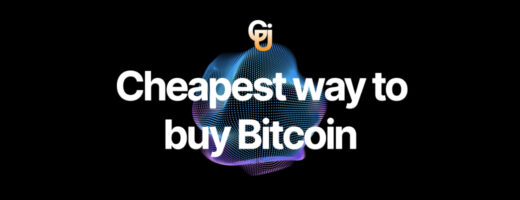- What is Ethereum?
- Why do you need Ethereum?
- The Solution is Decentralized Applications
- History of Ethereum
- What is Smart Contract?
- Traditional Contracts vs. Smart Contracts
- Key Terms in Ethereum
- What is Ether?
- Gas
- Ethereum vs. Bitcoin
- Applications of Ethereum
- Advantages of Ethereum
- Disadvantages of Ethereum
- Summary
What is Ethereum?
Ethereum is an open-source operating system that offers smart contract functionality. It is a distributed computing platform that supports developing decentralized Digital Applications (DApps) using blockchain technology. Ethereum provides a decentralized virtual machine called Ethereum Virtual Machine (EVM) that can run scripts using an international network of public nodes.
Ethereum is the biggest decentralized software app. It helps you to build smart contracts and decentralized applications without any downtime or any third-party interference. Ethereum allows the developer to create and publish next-generation distributed applications.
Why do you need Ethereum?
Centralized systems are one of the most widespread models for software applications. This system directly controls the operation of the individual units and the flow of information from a single center. In this kind of system, individuals are depended on the central power to send & receive information.
However, there are issues with the centralized system are:
- Single point of control & failure
- It can be corrupt easily
- Performance bottleneck
- Silo effect
The Solution is Decentralized Applications
Decentralized applications never reply on a centralized backend, but they interact directly with a blockchain. Refer this tutorial to learn more about BlockChain.
The term DApp is a combination of two words- decentralized applications. In simple words, it is an application, tools, or programs that work on the decentralized Ethereum Blockchain.
History of Ethereum
- 2013: Vitalik Buterin, a developer who was involved in Bitcoins, and he was first to describe on paper
- 2014: A Swiss firm Ethereum Switzerland Gmbh developed the first Ethereum software project
- 2015: Frontier, the first version of Ethereum was launched.
- On March 14, 2016: A planned protocol Homestead becomes second biggest version upgrade of the ethereum network.
- On May 2016: Ethereum gets the most extensive media coverage when the DAO raised a record $150 million in crowd sale.
- On July 2016: The network branched into two broad categories: Ethereum (ETH) and Ethereum Classic (ETC).
- June 2017: Ethereum rallies above $400 recording a 5001% rise since Jan 1st, 2017
- May 2017- Ethereum will eventually overtake the success of Bitcoins
- June 2018- The DAO was hacked by an anonymous group claiming $50 worth of ETH.
What is Smart Contract?
A Smart Contract is a computer program that executes automatically. It is a transaction protocol that allows blockchain users to exchange money and property. It also helps users to perform actions like voting without any central authority. It is a virtual third-party software agent that can automatically execute and enforce terms and actions according to the legal agreement.

Traditional Contracts vs. Smart Contracts
Below is the difference between traditional contracts and smart contracts:
| Parameter | Traditional | Smart contracts |
|---|---|---|
| Duration | 103 Days | Minutes |
| Remittance | Manual | Automatic |
| Escrow | Necessary | Necessary |
| Cost | Expensive | Fraction of the cost |
| Presence | Physical presence | Virtual presence |
| Lawyers | Lawyers are important | Lawyers may not be necessary |
Key Terms in Ethereum
- Currency Issuance: It is mostly managed and monitored by a country’s central bank. It is also referred to as a monetary authority.
- Decentralized Autonomous: Decentralized Autonomous Organization is a digital organization which aims to operate without the need for hierarchical management.
- Organizations (DAO): DAO is a combination of computer code, a blockchain, smart contracts, and people.
- Smart Contracts: It is digitally signed agreement between two or more parties which relies on a consensus system
- Smart Property: The Ethereum Wallet is a gateway to decentralized applications on the Ethereum blockchain. It helps you to hold and secure ether and other crypto-assets which are built on Ethereum.
- Solidity: Solidity is the smart contract language used in Ethereum. It is general purpose programming language developed to run in the EVM environment. Solidity helps you to perform arbitrary calculations. However, it aims to send & receive digital token and store states.
- Transactions: A transaction is a message which is sent from one account to another account that might be the same or empty. It can include binary data which is called Ether.
- Ethereum Virtual Machine: The Ethereum Virtual Machine which is also known as EVM is the runtime environment for smart contracts. EVM is a computer layer straight above the underlying hardware. It is not just sandboxed but isolated. Moreover, the code running inside the EVM doesn’t have any access to network, filesystem or any other processes.
What is Ether?
Ether is a value token of the Ethereum blockchain. It is listed as “ETH” on cryptocurrency exchanges. It helps you to pay transaction fees and computational services on the Ethereum network. In the Ethereum network whenever the contract is executed, Ether is paid.

Gas
To perform a transaction on the Ethereum network, a user requires to make a payment (to the miner) Ether via an intermediary token called ‘Gas.’ It is a unit which allows you to measures the computational work required for running a smart contract or other transactions.
In Ethereum, the transactions fee is calculated in Ether, which is given as
Ether = Tx Fees= Gas Limit * Gas Price
Where,
- Gas Limit= Refers to the amount of gas that is used for the computation
- Gas Price= The amount of Ether a user is required to pay

Ethereum vs. Bitcoin
Here is the main difference between Ethereum and Bitcoin:
| Parameter | Bitcoin | Ethereum |
|---|---|---|
| Definition | Bitcoin is a digital money | Ethereum is a world computer. |
| Founder | Satoshi Nakamoto | Vitalik Butarrn |
| Hashing algorithms | Bitcoin used SHA-256 algorithm. | Ethereum uses Etash algorithm. |
| Average Block time | 10 minutes | 10-15 sec |
| Release Date | 9 Jan 2008 | 30 July 2015 |
| Release Method | Genesis Block Mind | Prasala |
| Blockchain | Proof of work | Proof of work (Planning for POS) |
| Usage | Digital Currency | Smart Contracts Digital Currency |
| Cryptocurrency Used | Bitcoin(Satoshi) | Ether |
| Blocks Time | 10 Minutes | 12-14 Seconds |
| Mining | ASIC miners | GPUs |
| Scalable | Not now | Yes |
| Concept | Digital money | World Computer |
| Cryptocurrency Token | BTC | Ether |
| Turing | Turing incomplete | Turing complete |
| Coin Release Method | Early mining | Through ICO |
| Protocol | Bitcoin still employs the pool mining concept. | It uses a Ghost Protocol. |
Next in this Ethereum tutorial, we will learn about applications of Ethereum.
Applications of Ethereum
Below are the applications of Ethereum:
- Banking: With Ethereum’s decentralized system. It is almost impossible for a hacker to have unauthorized access to an individual’s personal information.
- Agreements: By using a smart contract, agreements can be maintained and executed without any alteration.
- Prediction market: The prediction market is another wonderful use case of Ethereum Smart Contract. The platforms like Gnosis and Augur use Ethereum for this purpose.
- Digital Identity Management: Digital identities can be managed by using smart contracts which solve the major issues of identity theft and data monopoly.
Advantages of Ethereum
Following are the advantages of Ethereum:
- Allows you to upload and request programs to be executed.
- 100% uptime and DDOS resistant.
- Ethereum helps you to create a tradable token that you can use as a new currency or virtual share.
- Persistent and permanent data storage.
- Build virtual organizations.
- Helps you to develop decentralized applications.
- Ethereum helps you to build fault-tolerant and highly secure decentralized apps.
Disadvantages of Ethereum
- The Ethereum Virtual Machine is slow, so you can’t use it for large computations.
- Storage on the blockchain is expensive.
- Swarm Scalability is an issue, so there is a trade-off with decentralization Private block chains are likely to proliferate.
- Fixing bugs or updating Apps is a tough task because every peer in the network need to update their node software.
- Some applications require verification of user identity, and as there is no central authority to verify the user identity.
Summary
- Ethereum meaning: Ethereum is an open source software framework which is based on blockchain technology.
- Ethereum helps you to build smart contracts and decentralized applications without any downtime or any third-party interference.
- Ethereum was launched in 2013 by developer Vitalik Buterin.
- Smart contracts allow blockchain users to exchange money and property. Mining Ethereum can be used for Smart Contracts as well as Digital Currency.
- Ether is a value token of the Ethereum blockchain. It is listed as “ETH” on cryptocurrency exchanges.
- To perform a transaction on the Ethereum network, a user requires to make a payment (to the miner) Ether via an intermediary token called ‘Gas.’
- Ethereum ensures 100% uptime and DDOS resistant.
- Fixing bugs or updating Apps in the Ethereum network is a tough task because every peer in the network need to update their node software.




